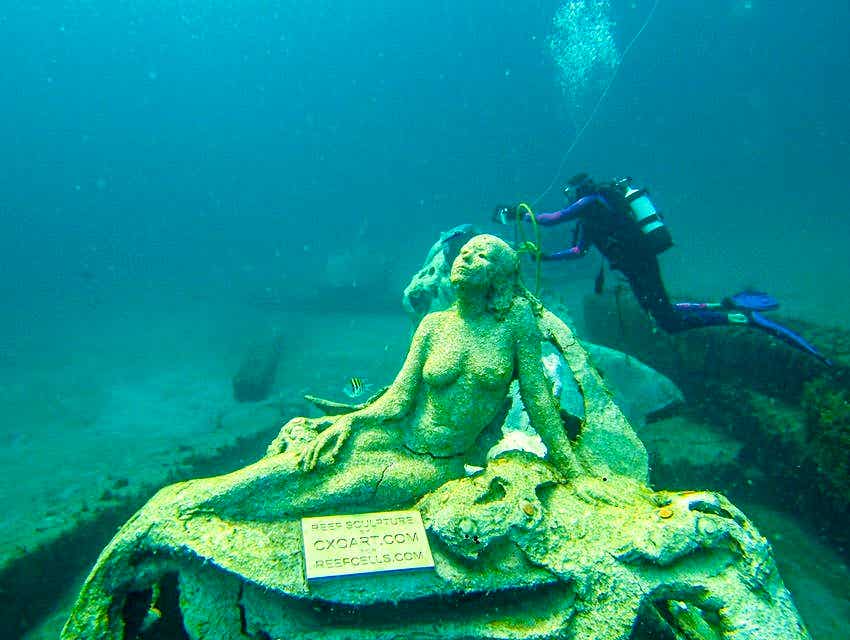Organization partners with public to design coral reefs and restore marine environment
Coral reefs are not just a pretty feature to look at underwater, they are described as the lungs of our ocean.

[June 8, 2021: Amanda Holly]
Coral reefs are not just a pretty feature to look at underwater, they are described as the lungs of our ocean. They protect coastlines from storm surge and erosion by acting as a barrier and absorbing wave energy before it makes it to shore.
Reefs provide habitats for over 4,000 species of fish along with creating jobs and bringing in billions of dollars in tourism, fishing and recreation around the globe.
Unfortunately, reefs are dying due to pollution, fluctuating water temperatures and ocean acidification. These lead to slower growth rates, lack of reproduction and ultimately coral bleaching events, which kills the entire reef line. Between 30% and 50% of the globe’s reefs have already died.
The Ocean Rescue Alliance, located in Tampa, is fighting back to help restore our marine environment. They are working directly with communities around the globe implementing patented innovative technologies to design and create artificial reefs.
The reefs are built using ocean-safe materials which allow coral to attach and grow and ordinary people can help design them. This creates a lasting memory on the ocean floor, enhancing the connection with the underwater environment and helping to restore it.
Shelby Thomas, CEO and director of research with the Ocean Rescue Alliance, says they are, “using the latest and greatest technology, such as 3D scanning and virtual reality, to be able to take any type of image or art theme idea and create it into a reef.”
“Now we can create these really unique sites that engage the local community and bring awareness but they’re also very important for our marine habitat,” Thomas said.
One initial project is named “1,000 Mermaids” and aims to create a reef made up of 1,000 individually handcrafted people into mermaids.
The reefs not only provide homes for fish with large and small structures, they provide a healthy base for coral growth. Working with reef cells, they are using a patented “coral lock” that allows them to out-plant many corals at one time.
A coral lock is a small circular piece that has a threaded plug on the bottom. The structures are then initially sculpted with hundreds of the receivers and then placed on the ocean floor.
The Ocean Rescue Alliance has partnered with several organizations like the Florida Aquarium, Mote Marine Laboratories, Secore International and the Coral Restoration Foundation with NOAA. They all work to grow corals on these plugs and, when ready, they are simply able to be screwed into place on the structures already in the ocean.
This is not only safer for the environment over gluing corals onto structures but it also increases the efficiency of out-planting them. Thomas says they are able to place hundreds of corals at once with this type of technology because it lessons the time it takes to place one down.
The organization is working to place coral reefs specifically designed for the culture of the area. For example, they are working in Mexico designing a Mayan-themed reef. This provides the locals a place to preserve their culture while also bringing in tourism for fishing and especially for scuba diving as divers can enjoy the beautifully-crafted reef.
Locally, the organization has approval and some funding from Pasco and Hernando counties to place these reefs. Anyone is able to add to the reef by designing a unique structure or plaque. Reef plots can be designed to dedicate or memorialize families by providing a lasting resting place for generations to come while also restoring marine environments and bringing new life to the area.
To design a reef of your own, you can visit Ocean Rescue Alliance’s website.
The possibilities are limitless whether it is a memorial, celebration, life achievement, plaque or a structure. Every option directly impacts supporting marine life and restoring coral.
Like these kind of feel good stories? Get the Brighter Side of News' newsletter.
Tags: #Green_Good_News, #Oceans, #Coral_Reefs, #The_Brighter_Side_of_News
Joseph Shavit
Head Science News Writer | Communicating Innovation & Discovery
Based in Los Angeles, Joseph Shavit is an accomplished science journalist, head science news writer and co-founder at The Brighter Side of News, where he translates cutting-edge discoveries into compelling stories for a broad audience. With a strong background spanning science, business, product management, media leadership, and entrepreneurship, Joseph brings a unique perspective to science communication. His expertise allows him to uncover the intersection of technological advancements and market potential, shedding light on how groundbreaking research evolves into transformative products and industries.



